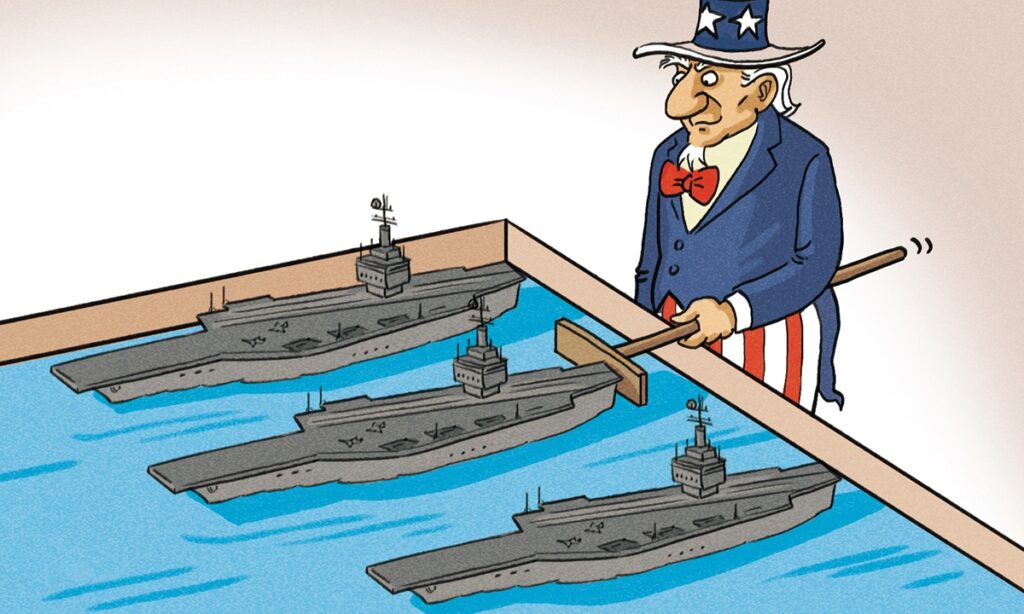Two US aircraft carriers – The USS Nimitz and USS Ronald Reagan Carrier Strike Groups on Sunday carried out military drills in the Philippine Sea, The Japan Times reported. The US Navy seems to have adopted a high-profile military posture in the Western Pacific region. A couple days ago, Washington simultaneously deployed three of its 11 nuclear aircraft carriers in the region for the first time since 2017. These military activities are definitely aimed at China.
Washington may hope to deliver two messages by engaging in these activities. First, it wants to underline US’ absolute military dominance in Asia-Pacific region, and its determination to contest or even confront with China. Second, the US intends to bolster claims asserted by some countries, such as Vietnam and the Philippines, which have territorial disputes with China over the South China Sea. This will attract these countries to join the US’ chariot in containing China.
Washington has maintained its military presence in Western Pacific region for a long time. Yet sending three aircraft carriers to the region at the same time, then two of them conducting joint exercises within only several days can be seen as massive and intensified military activities. Three factors may be contributing to this show of force.
The US has planned to maintain its military presence in the Western Pacific region
Due to the spread of the deadly novel coronavirus pandemic, Washington’s deployment was delayed for a while. After the crews recovered from the pandemic, the readiness of the aircraft carriers may have recovered for renewed patrols and live training.
Besides, tensions between Hanoi and Beijing over South China Sea have recently increased. US navigation in the region may boost Vietnam’s confidence to adhere to its claims in the South China Sea.
Additionally, in this election year, showing off military muscle against China can help President Trump’s embattled administration create a hard-line image with international diplomacy. This can also serve its attempt to use the pandemic as an excuse to suppress China, as well as its strategy to compete with China. Especially when Trump’s approval rating is declining, building up a tough image of the US may help him gain support from more voters.
The US military deployment and presence in the West Pacific region will continue, but it remains to be seen whether it will ramp up its scale.
Such military activities in the region will pose a certain threat to China. Washington has labeled Beijing as its strategic competitor since 2017. Increasing military presence surrounding China will certainly threaten the latter’s national security.
Additionally, the US maintaining its military presence and deployment can be seen as supporting other claimants’ illegal claims over the South China Sea, which will negatively affect China’s sovereignty security.
In so doing, the US’ repeated military moves will instigate instability and step up regional tensions. Incited by the US, some regional countries in the South China Sea may even upgrade their rifts with China into military frictions. This will impair regional security, moreover, be detrimental for the development of China and all regional countries.
In the face of Washington’s constant military activities targeting Beijing, the latter needs to take a rational stance.
In terms of diplomacy, Beijing should clearly and definitely express its opposition toward them. However, it doesn’t mean China will respond in kind by deploying its own warships to face off with the US.
But when the US violates China’s sovereignty, territory or maritime interests (such as sailing within 12 nautical miles of Chinese territories), China must make tough and firm responses.
The author is deputy director at the Institute of International Relations, the Shanghai Academy of Social Sciences. opinion@globaltimes.com.cn
Illustration: Liu Rui/GT


